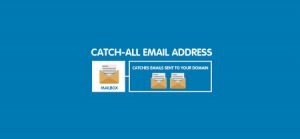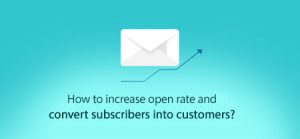If you’re feeling somewhat uncomfortable when writing follow-up emails, you’re not alone. Many marketers don’t know how to approach follow-up emails for an obvious reason: if somebody doesn’t respond to your emails, the chances are that they are not interested in your offers. Perhaps, they wouldn’t like to see another email from you. However, the truth is that sending another email can be exactly what you need.
The thing is that many prospects don’t agree to marketing offers immediately. They may read two, three, four, or five emails before they decide to purchase something from you. According to research, while the first email can have an 18% response rate, it can reach 27% for the sixth email. In another study where the first email got a 30% response rate, the fourth email still had a 14% response rate, and such a figure is too good to be ignored. Nevertheless, as much as 70% of email chains are interrupted after a single unanswered email.
Most people give up after they hear “no” a few times, but if you’re an email marketer, you need to be persistent because persuading your audience to make a purchase can be a tricky task that takes time and patience. According to statistics, drip email campaigns with one to three emails get three times fewer responses than campaigns with up to seven emails.
When Should You Send Follow-up Emails?
Timing is very important in email marketing, and it can have a huge influence on your success. Sometimes, even a 30-minute difference in time can determine whether or not your recipient will open and read your email or delete it immediately. Email marketers have different approaches to timing, and every practice has its advantages. The most effective approach, however, is to do A/B testing based on your own data, because every business and every audience are unique.
If you’re looking for general advice, these universal tips might help you.
- Avoid Mondays. Many people start their week by planning their tasks and checking out their inboxes. They’re focused on work so they’re also more likely to delete any messages that seem not important or irrelevant.
- Avoid Fridays. On Fridays, many people finalize their tasks and plan their weekends. They are unlikely to consider your offers because they’re focused on other things.
- According to research, sending your emails on Tuesday, Wednesday, and Thursday at 2 pm can be the right choice. However, if your emails appear in inboxes along with tons of emails from other companies, they will get less attention so don’t be afraid to experiment, and always test your campaigns.
Effective Tips on Writing Follow-up Emails
Define the objectives of your follow-up emails
First of all, you should clearly understand the purpose of your emails. For example, some prospects might go cold so you may want to restart your relationships. Once the goal of your follow-up emails is determined, you can choose the right type of content and figure out all the other details, including the number of emails and calls to action.
Remind the context
Refresh your recipients’ memory by mentioning your previous interaction or previous emails. Your recipients’ reaction will more likely be positive if you remind them that they’ve already interacted with you before. Tell them that you wanted to know their opinion on a certain subject or ask them a question that will help you start a conversation.
Provide value
If you want to win your subscribers’ attention, you should prove that your emails actually deliver value. Don’t write meaningless follow-ups. Make your interaction natural, authentic, and genuine. Besides, you can offer a discount or a gift. You may also offer a free webinar, resource, and other useful information.
Write catchy subject lines
Nobody will pay attention to your email if your subject line doesn’t catch your recipients’ attention immediately. Effective subject lines have some common features. They are:
-
- Personalized. Tailor your subject lines to the specifics of your audience, including their location, preferred devices, and demographics data.
- Short and engaging. According to statistics, the most effective headlines contain seven words and 41 characters. Keep your subject lines short and use creativity to convey your point. This way, you will also make them more engaging.
- Detailed. Your subscribers don’t have much time so you must make sure that your subject lines are clear and detailed. They should be able to figure out what your emails are about quickly.
Include a call to action
To make your recipients most likely to respond, make your emails easy to respond to. For example, you can suggest a specific date for a meeting or phone call. Include a CTA button or link to your landing page, and ask them to reply “yes” if they are interested in learning more about your offer — choose any calls to action that fit the purpose of your follow-up emails. Make sure that your calls to action are visible.
Use a clear and straightforward language
Your recipients get tons of emails so you should be as clear as possible to help them quickly understand your point and focus on your email. If you waste your readers’ time, you won’t be able to improve your relationships with them. Moreover, you may damage these relationships. Avoid any jargon and terms that can damage the readability of your email, and get straight to the point. If you don’t have a copywriter in your team, it may be smart to read some writing service reviews and pick a professional writing service that will help you write an effective email copy.
Add multimedia
You can grab your recipients’ attention with images, infographics, and videos. This way, you will also make your emails more engaging. Videos are especially effective — they can help you increase the click-through rate by up to 300%.
Final Thoughts
When it comes to follow-ups, one of the most important things is to be patient. Your prospects may not be ready to make a purchase right now, so you should send follow-ups consistently. This way, you will build your relationships with them step-by-step, until they become ready to buy. Of course, you can use email marketing without follow-ups, but if you ignore them, you will miss out on many good opportunities to re-engage with subscribers and to move them to the next step of your sales funnel.






